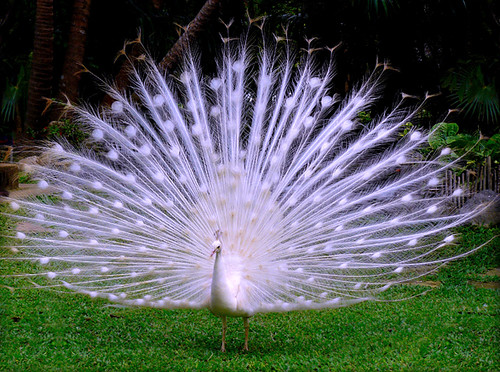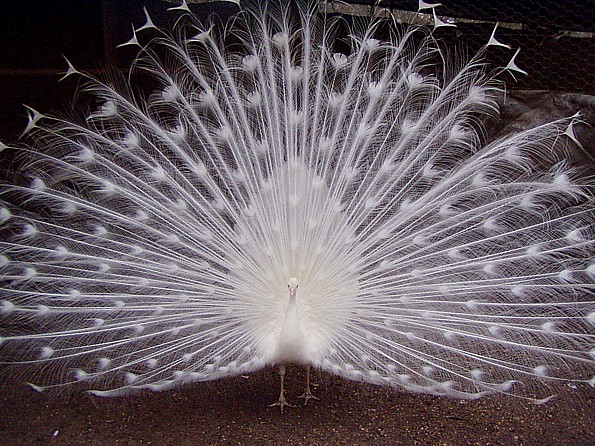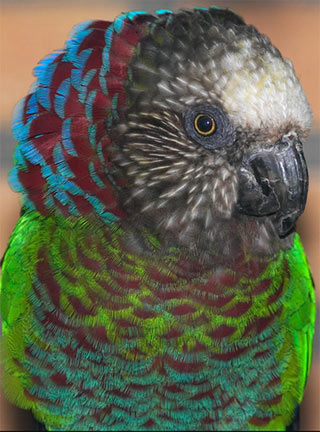

Female

Male



Hawk-headed Parrots, Deroptyus accipitrinus, are native to the Amazon basin. According to Forshaw (Parrots of the World), Hawk-heads inhabit undisturbed lowland rain forests on higher ground and tend to avoid flooded forests, forest margins, and clearings. They feed on fruits, seeds, nuts, berries, leaf buds, and vegetable matter. They congregate in small groups.
Relatively small, Hawk-headed Parrots are 31–35cm long and weigh 190–274g, again according to Forshaw. That is, they are about the size of Timneh Greys but are not as stocky. They are striking birds with buff-white crown and forehead, cheeks brown streaked with white, nape and hind neck dark red edged with blue, green backs and wings, and breast and abdomen dark red edged with blue.
Hawk-headed Parrots are not easy to breed. They lay two or three eggs and incubate 26 days. Babies fledge at about 9 weeks. Hawk-heads in breeding situations can be extremely aggressive towards both aviculturists and mates. Hawk-heads have been known to kill mates, even in pairs that appear to be closely bonded.
Hawk-headed Parrots are relatively rare in U.S. aviculture. Typical breeder prices for weaned babies range from $1400 to $2000.







